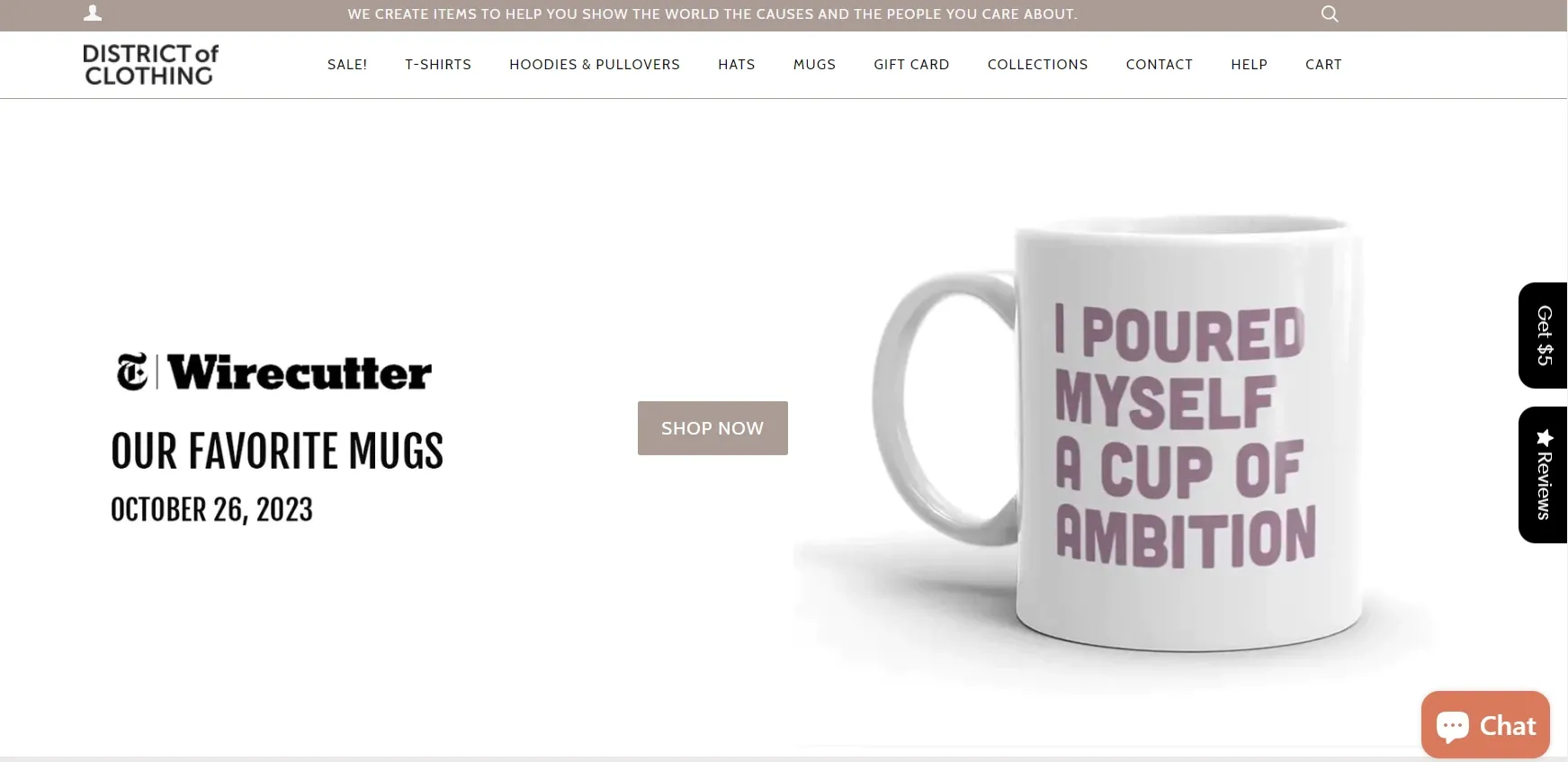The global print-on-demand market is expected to grow at a CAGR of 25.3% between 2023-2031 and it’s projected to touch $45.6 billion by the year 2031, a report by Straits Research states.
This is the perfect time to take advantage of this industry’s massive potential and launch your print on demand store. Whether you’re passionate about designing or you simply want to explore the world of POD businesses, Shopify is a platform worth exploring. Trusted by more than 2 million sellers, Shopify offers a user-friendly interface and simple-to-use features that can help you get started from scratch and adapt quickly as the business grows bigger.
In this guide, we walk you through the steps to start a Shopify print on demand business. From setting up your online store to sourcing products, print on demand business ideas, designing custom merchandise, and marketing your brand, we share foundational knowledge and practical tips to kickstart your entrepreneurial journey, even if you don’t have any experience.
What is Print on Demand?
Print on demand (POD) is a business model that allows you to create and sell customized products without the need for upfront investments or inventory management. Instead of mass-producing items in advance, products are manufactured and shipped only when a customer places an order.
Why are Ecommerce merchants opting for print on demand products? Because the on-demand production process reduces operational costs, minimizes risks, supply chain wastage, and provides greater flexibility for sellers.
Advantages of Shopify print on demand businesses
Room for customization
With Shopify, you can set up your print on demand store just the way you visualized it. The Shopify Theme store has more than 150 free and paid customization options, along with examples of stores you can take inspiration from.
Easy to set up
You don’t have to be a tech expert to navigate your way through Shopify. The process of launching a print-on-demand Shopify store is simple, and there are detailed video tutorials to make sure new shop owners have a smooth beginning.At the same time, for the advanced tech assistance, some users may consult freelance or offshore Shopify developers.
In-house apps
Shopify is a fully hosted platform with over 1200 in-house applications and it supports integration with third-party software. With this, it becomes easier for you to manage the different aspects of an online store, including inventory management, shipping, customer relationship, marketing, and more.
Low upfront investment
Before subscribing to a paid plan, you can run a pilot with Shopify’s 14-day free trial. The plans are affordable, so in the early days of your business, you won’t have to make a hefty investment to start your online store.
Best print on demand Shopify store examples
District of Clothing
District of Clothing
District of Clothing’s print on demand Shopify store has a clutter-free user interface with ample white space to allow the products to do all the talking. The web pages are easy to navigate, you can seamlessly browse through their entire collection of t-shirts and hoodies, chat with the brand if you have any questions, and go through product reviews.
The website copy is just as straightforward, putting the spotlight on the powerful quotes featured on the products.
The Feminist Vibe
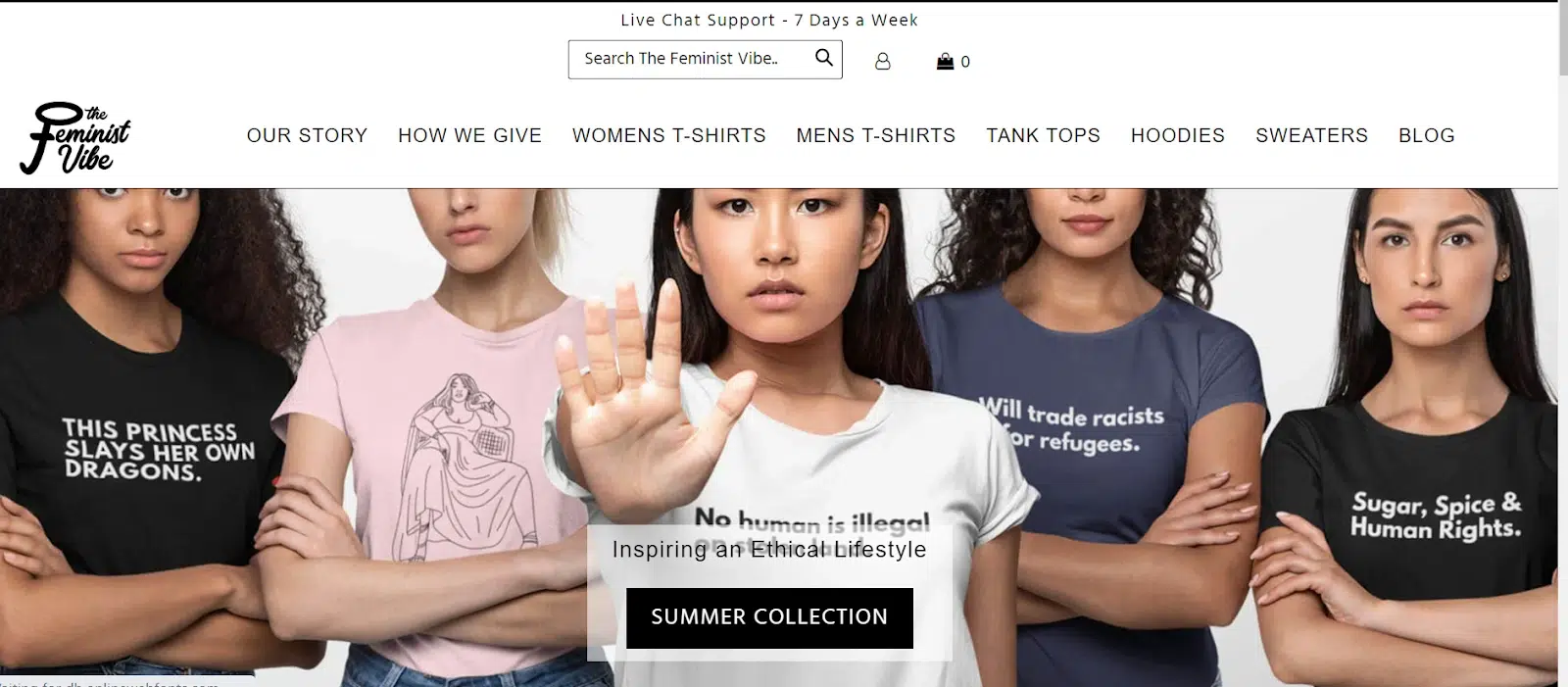
The Feminist Vibe’s brand ethos is deeply ingrained all over their Shopify store. The t-shirts, tank tops, sweaters, and hoodies carry the witty and powerful quotes that are very much aligned to the brand vision of creating ‘a better and equal world for all’.
To support its vision, the brand donates 10% of its profits towards human rights charities, and there is a dedicated page where they have talked about their commitment to philanthropic endeavors. The seamless user interface and clever copy enhance the browsing experience and directly appeal to their ideal customers, i.e., modern-day feminists.
Raccoon Brand
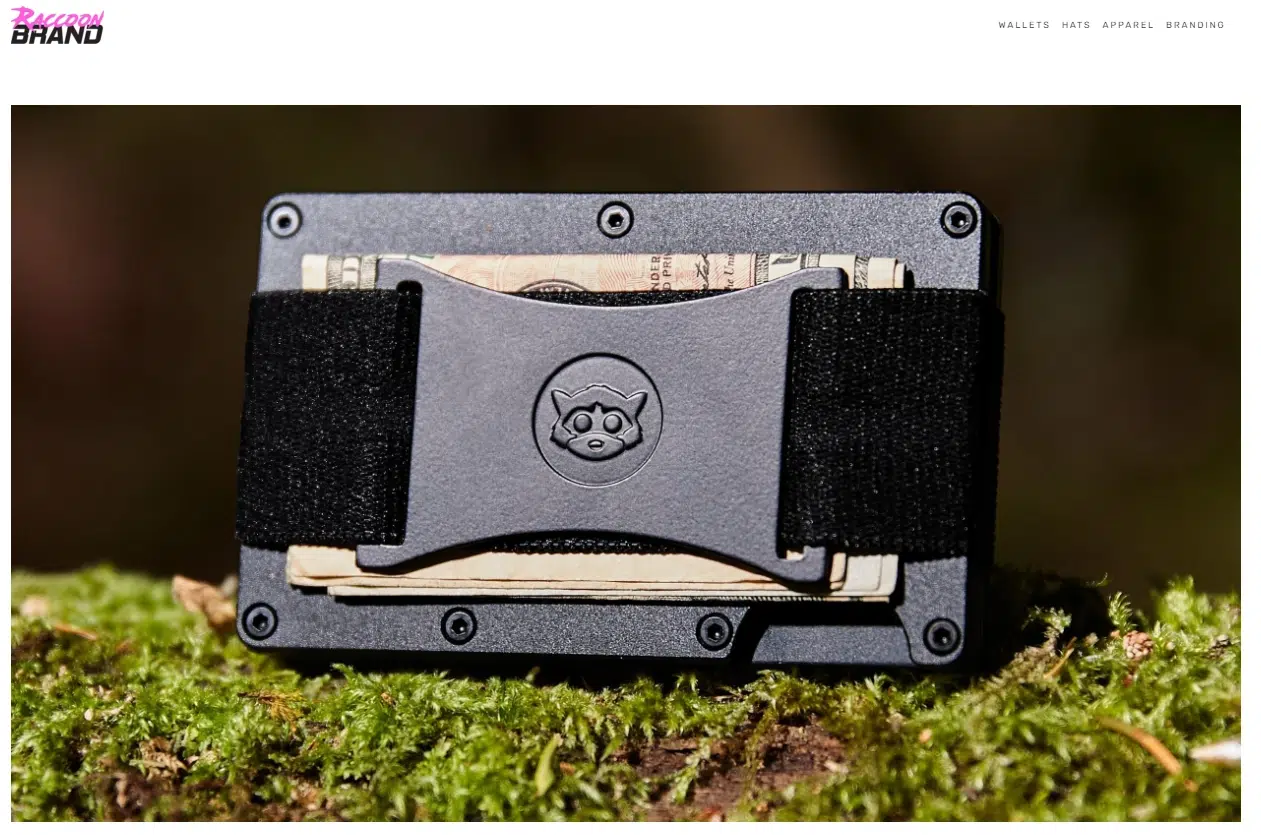
While the Shopify storefront of this print-on-demand brand is absolutely basic, its way of doing business piques our interest. When you click on the products listed on either of the three product pages, you will be redirected to Amazon. Raccoon Brand doesn’t manage sales through its website—Amazon handles everything, including returns and customer support. This means the company has fewer responsibilities and fewer overheads, and they can focus on core business to make more profits.
Read in details about the latest Shopify trends to stay on top of your game.
Getting started: How to set up your Shopify print on demand store
As a powerful ecommerce platform, Shopify provides a comprehensive ecosystem to start and manage your print on demand business.
The steps to setting up your Shopify print on demand store are:

- Head over to shopify.com, fill in your email address, and click on ‘Start free trial’.
- Add a password and then the name of your print-on-demand store.
- Click on ‘Create your store’.
- Add your name, address, and phone number.
- Click on ‘Next’ to add some additional information.
- Click on ‘enter my store’.
- Pick a suitable theme, choose colors, and create essential pages (e.g. products, about, contact us, etc.).
- Go to ‘Shopify Admin’>‘Settings’>‘Legal’. Create refund policy, privacy policy, terms and conditions, and shipping policy using the ‘Create from template’ button.
And with that, you’re a step closer to beginning your print-on-demand journey.
Selecting your print on demand service provider
Choosing a reliable print on demand service is essential to the success of your business and important factors to consider are:
- The print on demand provider should have a product range that meets your requirements
- There shouldn’t be any quality-related problems
- It should have a sustainable pricing model that aligns with your business goals
- The provider must implement new-age printing technology and offer room for customization
- Understand the provider’s order fulfillment process and shipping options
- Ensure the POD service integrates with Shopify and supports automation
- Ensure the return and refund policies are aligned with your business model
Some of the popular Shopify print on demand apps are: Printful, Printify, CustomCat, Gelato, and SPOD.
Popular Shopify print on demand business ideas
If you are looking to start a business with limited funds and resources, POD business is your best choice as you start producing items only after the customer has paid. Here are some print on demand business ideas worth trying:
- Mugs
- Unisex t-shirts and hoodies
- Jewelry
- Phone cases
- Wall art
- Merchandise like water bottles and towels
Creating unique designs for your POD products
In the saturated POD market, you can make your Shopify store stand out with unique designs that appeal to your specific target market.
Here are some tips you can follow:
- Take notes from successful competitors, browse through Pinterest, look for ideas from social media, use websites like Pixabay and Unsplash for free designs, and brainstorm with your team to come up with innovative design ideas.
- Use higher DPI (at least 300 DPI) to get greater print clarity.
- If you have design experience and you’re looking to stay cost-efficient in the early days of the business, you can do the designing by yourself using Canva or Adobe Illustrator. Remember to keep the buyer persona in mind while finalizing designs.
- You could also hire a professional designer for this job. Share market insights, and your vision and ideas with them so they can successfully come up with impressive designs.
Pricing your products
Pricing your Shopify print-on-demand products appropriately calls for a delicate balance of maximizing profits while remaining competitive.
Here are some tips to arrive at a suitable selling price:
- Before you decide on your pricing, define the business goals you want to achieve, be it maximizing your profits, increasing market share, or building customer loyalty.
- Consider all the costs associated with the production, including cost of materials, printing, packaging, shipping, labor, marketing, and any other additional expenses. Then decide on your desired profit margin based on your business objectives, target market, and industry standards.
- Be flexible with your pricing—offer regular discounts upon repeat orders, buy-one-get-one, referrals, and coupons for signing up and placing the first order.
- Once you’ve built a customer base, conduct surveys to understand which price range is the most viable for them.
Marketing your print on demand business
After setting up your print-on-demand business, the next step is to establish your brand presence and market it to the right audience.
Here are some ecommerce marketing strategies you can implement:
Define your target audience
To start selling, you first have to know who you’re selling to, what do they like, and how you can be more appealing to that audience.
Here are a few quick tips to identify your target audience:
- Conduct market research—use factors like age, gender, location, interest, lifestyle, buying habits, and income level to understand who are most likely to purchase your products.
- Create your ideal buyer persona and use it as a reference point to craft your marketing campaigns.
- Once you start making sales and you’ve built a customer base, analyze your existing customer data. Look for patterns in their purchasing behavior and demographics to gain a better understanding of your target audience.
Leverage email marketing
A study conducted by Direct Marketing Association (DMA) found that email marketing generates an ROI of £42 for every £1 spent. It is a cost-effective way to connect with your target audience and promote your products.
Start building a mailing list and design email campaigns to tell your audience more about what you do and what’s your USP, and eventually convert them into customers.
When people willingly give you their email addresses, it indicates they are interested in what you have to offer. With active email campaigns in place, you can easily push time-sensitive offers, address cart abandonment, and drive more sales using upsell and cross-sell techniques.
Here are some tips to make effective email campaigns for your Shopify POD store:
- Understand the needs and preferences of your customer segment and personalize your message accordingly.
- Use subject lines that instantly grab attention and compel the recipient to open the email.
- Use email automation to send post-purchase emails like surveys and a discount coupon for the next purchase.
Here’s an example from a DTC brand Zouk:
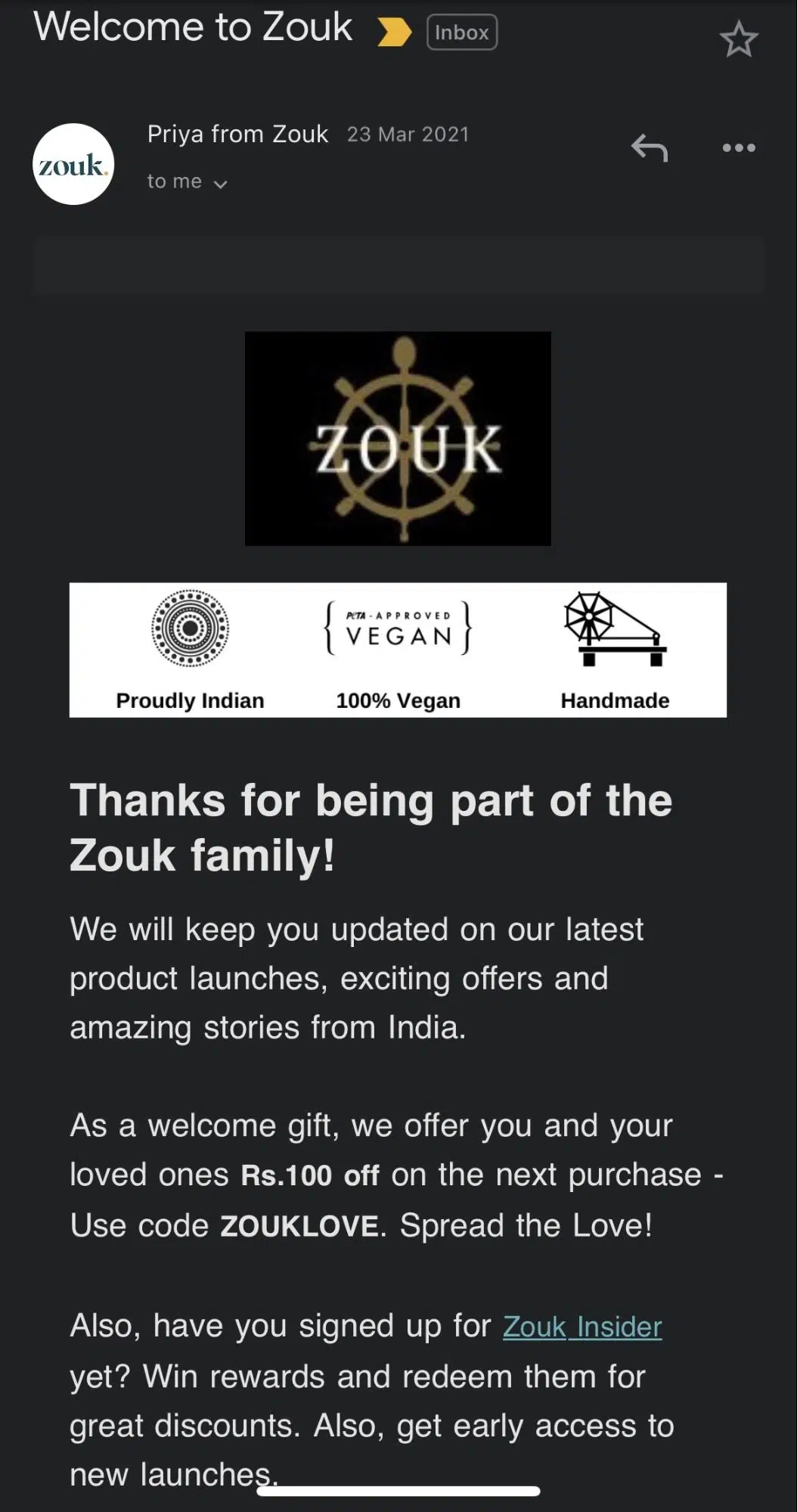
- Use A/B testing to experiment with your subject lines, CTA, and visual elements to understand which type of emails get higher engagement and conversion.
- Add a clear call-to-action (CTA) in your email.
Let’s take this cart abandonment email from Red Raven for example—it has a clear CTA to address the issue of cart abandonment.
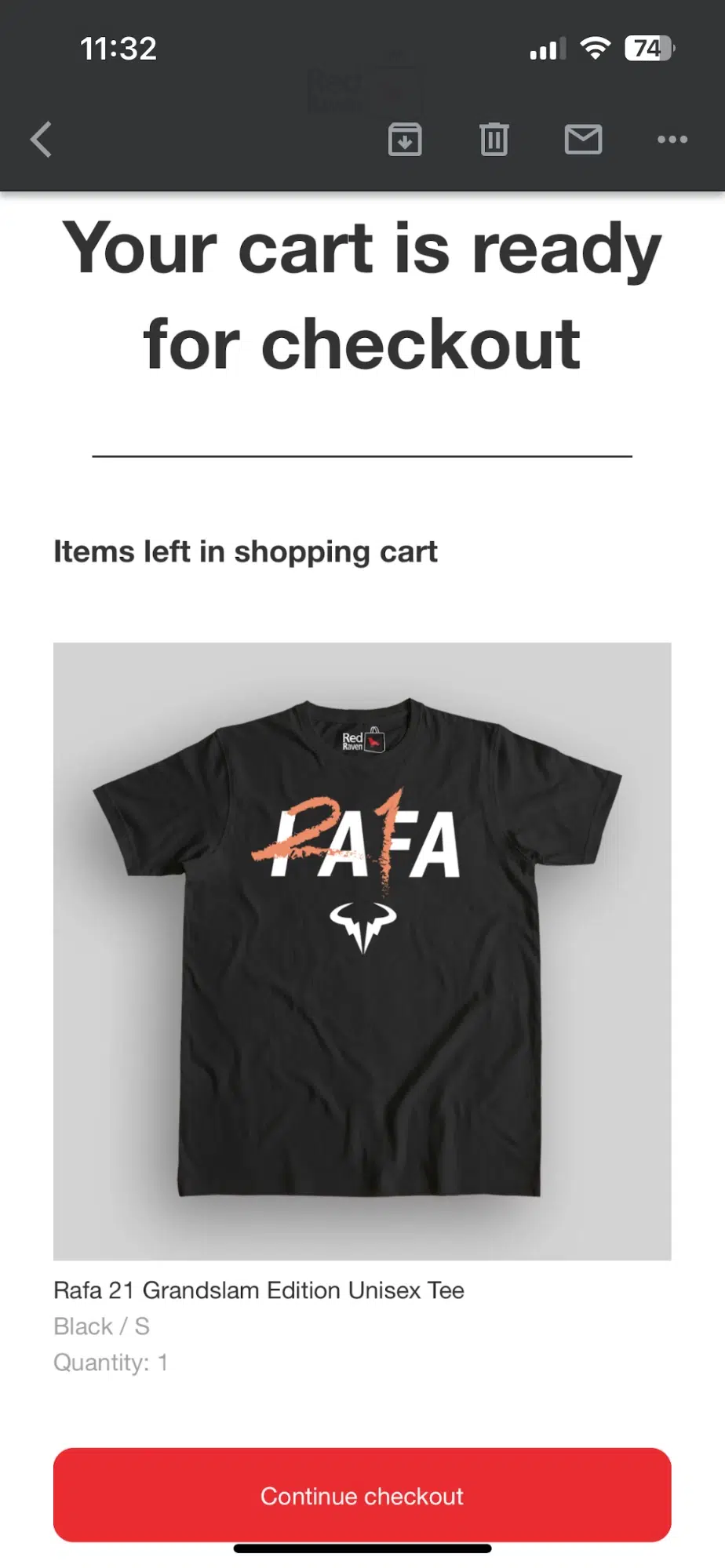
Learn more about how to transform your email marketing game.
Scaling your Shopify print-on-demand business
When your store begins to gain momentum and your marketing efforts finally start to pay off, it’s time to scale higher. The key here is to embrace automation and use the power of data to make strategic decisions. Get started with a comprehensive customer data and engagement platform like Lifesight Engage.
Here’s how Lifesight Engage can help you scale to the next level:
Advanced customer insights: Lifesight Engage unifies all customer touchpoints across systems, giving you insight into what your customers like, what makes them happy, and what they buy.
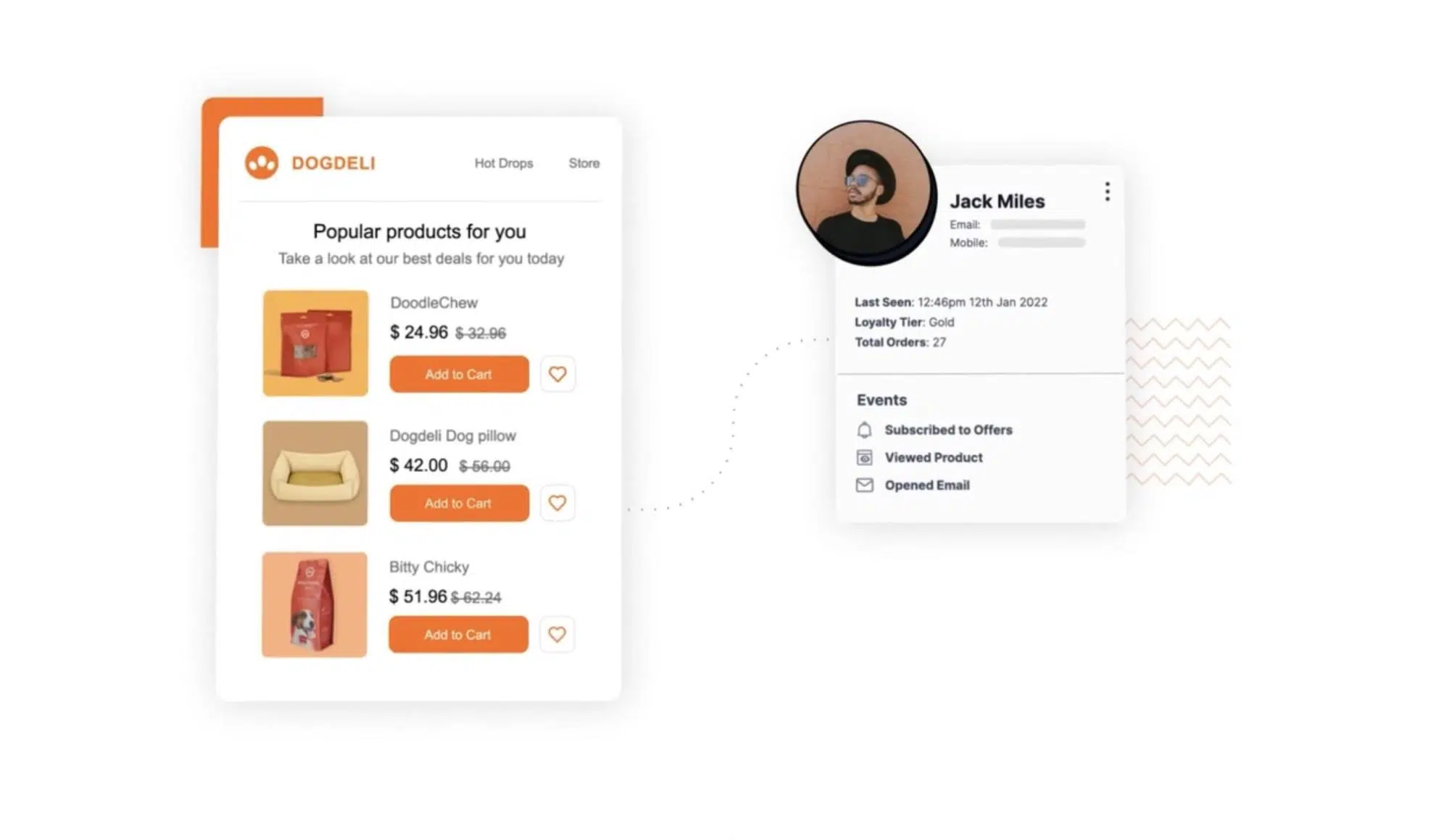
Segmentation: Using automation, Lifesight Engage maps customers into different intelligent segments. You can plan targeted campaigns for specific segments and make sure they drive more sales.

Ready-to-use templates: Lifesight Engage offers thousands of pre-built templates for all social channels, so you don’t have to start the campaigns from scratch.
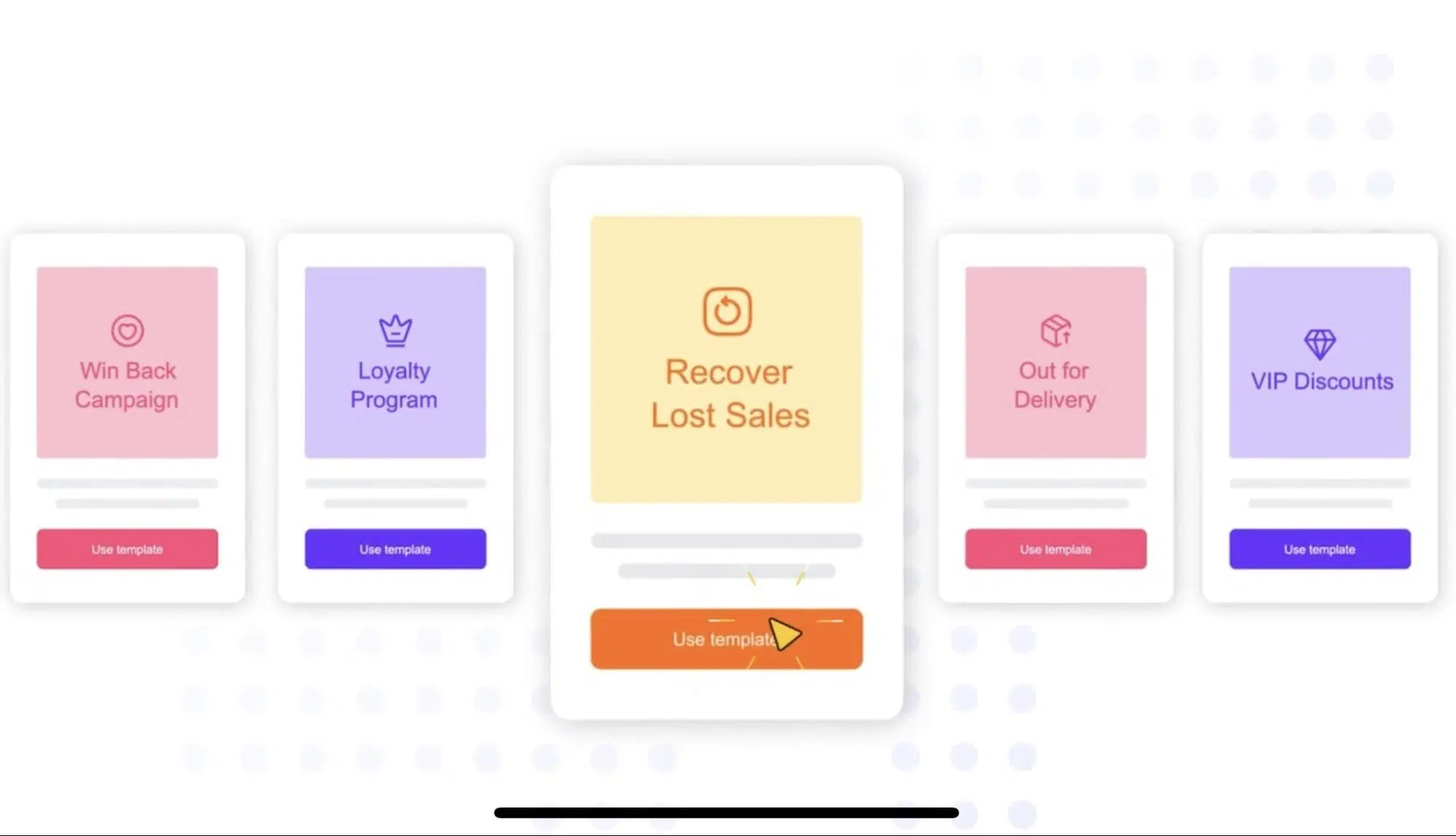
Comprehensive reporting: Check data and analytics to track the performance of your campaigns and make informed decisions.
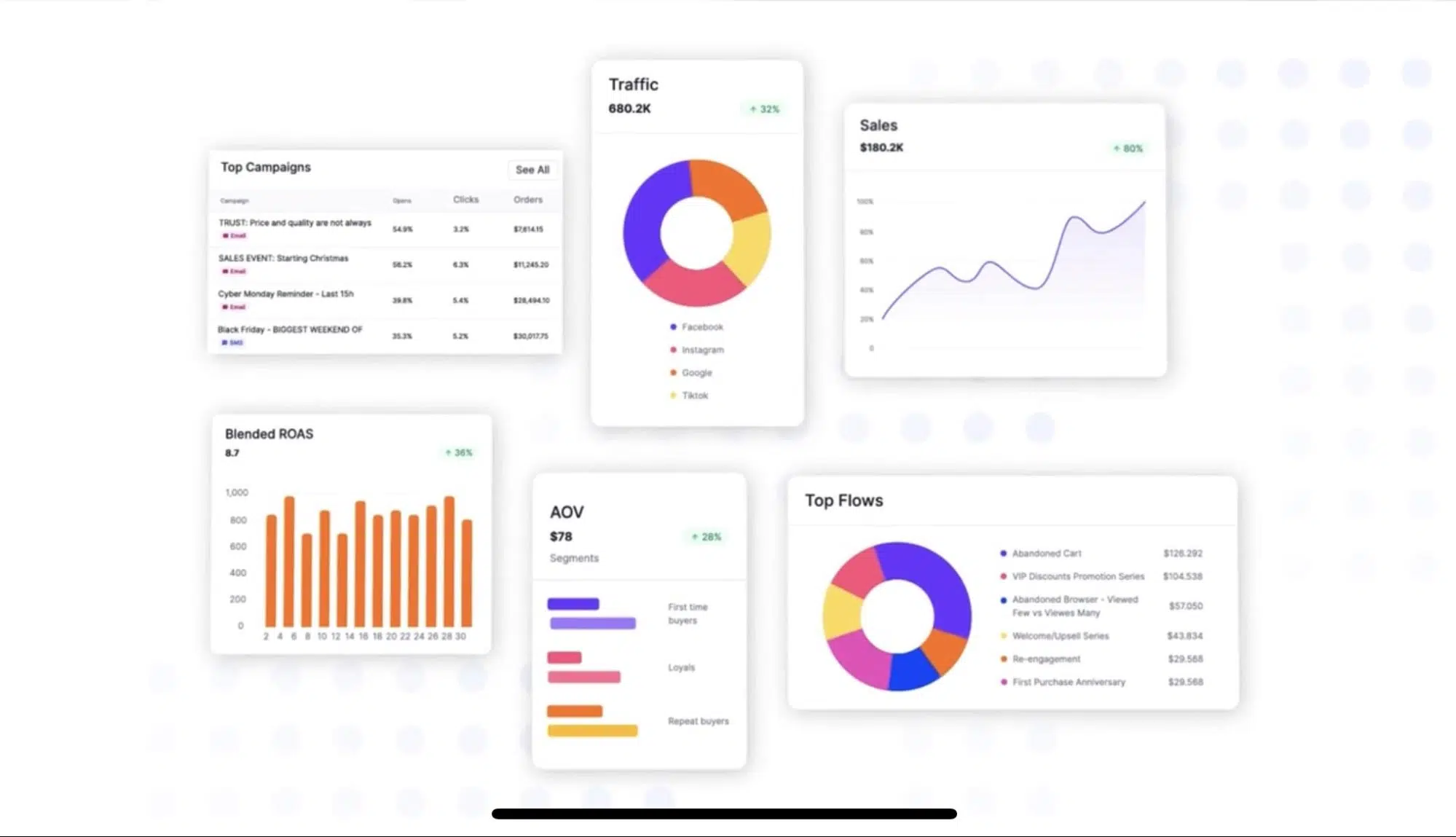
Managing customer service and satisfaction
To establish a strong foothold in the industry, it is essential to prioritize customer satisfaction and deliver top-notch customer service.
Here are some tips and strategies you can implement:
- Use chatbots to answer customer queries in real time while they are shopping. Tweak the responses so they feel personal and the customer doesn’t feel like they are talking to a bot.
- Before you start selling, order a few products for yourself from the print-on-demand provider to check their quality.
- Offer loyalty programs to promote repeat purchases and build a referral system.
- Encourage user-generated content in the form of website reviews or social media mentions, so other customers know that your brand is authentic and reliable.
Final thoughts
Now it’s time to follow these outlined steps and dive into the exciting and profitable journey of your print-on-demand Shopify store.
It’s no rocket science — all you need to do is be diligent with your market research, come up with unique designs, partner with a reliable POD provider, and start selling.
Use Lifesight Enagage to leverage your Shopify store data using AI, design automation campaigns with its pre-built templates, build lasting relationships with customers, and make data-driven decisions to grow your business, all within the convenience of a single platform.
You may also like
Essential resources for your success

